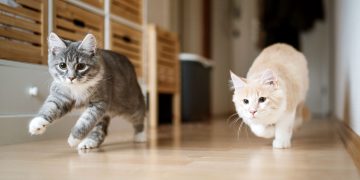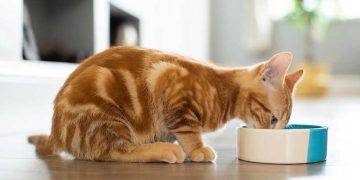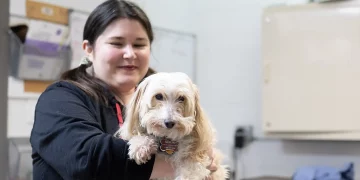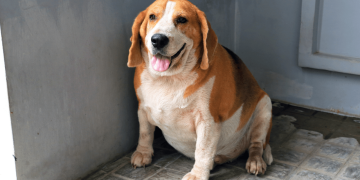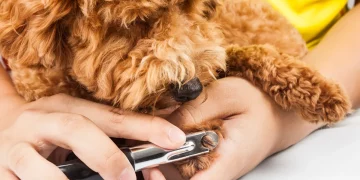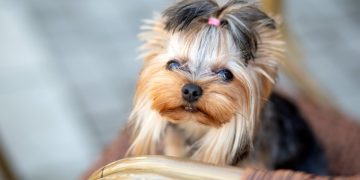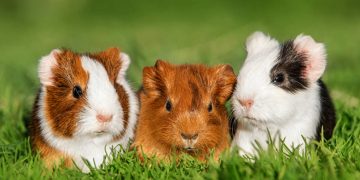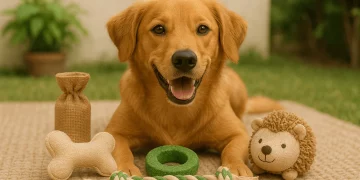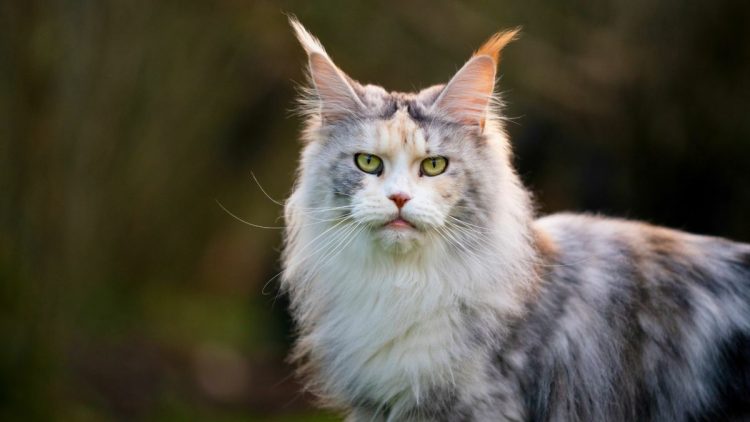When it comes to choosing a pet, dogs and cats are the top choices for many households. Whether you’re a first-time pet owner or a seasoned animal lover, understanding the characteristics of different breeds and how to care for them is crucial for a happy and healthy companionship. In this guide, we’ll explore some of the most common dog and cat breeds, highlighting their unique traits and providing essential care tips to help you give them the best life possible.
1. Popular Dog Breeds: Characteristics and Care Tips
1.1. Labrador Retriever
The Labrador Retriever is one of the most popular dog breeds worldwide, known for its friendly nature, intelligence, and high energy levels. Labs are excellent family pets and often make great working dogs, whether in search and rescue, service roles, or as hunting companions.
Key Characteristics:
- Size: Medium to large (55-80 pounds)
- Coat: Short, dense, water-resistant
- Temperament: Friendly, outgoing, and loyal
- Exercise Needs: High
Care Tips:
- Exercise: Labs are highly active and require regular exercise. Long walks, runs, and playtime will help keep them fit.
- Grooming: While they shed seasonally, their short coat is low-maintenance. Regular brushing can help control shedding.
- Training: Labs are intelligent and eager to please, making them easy to train. Positive reinforcement works best.
1.2. German Shepherd
Known for their loyalty and intelligence, German Shepherds are often employed in police and military roles. They are protective, alert, and love to work, making them ideal companions for active individuals or families.
Key Characteristics:
- Size: Large (50-90 pounds)
- Coat: Medium length, dense
- Temperament: Loyal, intelligent, protective
- Exercise Needs: Very high
Care Tips:
- Exercise: German Shepherds require mental and physical stimulation. Daily walks, play sessions, and training exercises are essential.
- Grooming: Their thick double coat sheds year-round, so regular brushing will help manage hair loss.
- Training: Due to their intelligence, German Shepherds excel in obedience training. Be consistent and firm, as they can be dominant if not properly trained.
1.3. Golden Retriever
Golden Retrievers are beloved for their affectionate nature and love of play. They are patient, friendly, and great with children, making them ideal family pets.
Key Characteristics:
- Size: Medium to large (55-75 pounds)
- Coat: Long, wavy, water-resistant
- Temperament: Friendly, intelligent, loyal
- Exercise Needs: High
Care Tips:
- Exercise: Golden Retrievers thrive on exercise and enjoy activities like swimming, hiking, and fetch.
- Grooming: Their long coat requires regular brushing to prevent mats and tangles.
- Training: Golden Retrievers are highly trainable and respond well to positive reinforcement. Keep training sessions fun and engaging to maintain their interest.
1.4. Beagle
Beagles are small to medium-sized dogs with a remarkable sense of smell and a curious, friendly nature. They are excellent family pets, known for being gentle with children and easygoing.
Key Characteristics:
- Size: Small to medium (20-25 pounds)
- Coat: Short, smooth
- Temperament: Friendly, curious, good with kids
- Exercise Needs: Moderate
Care Tips:
- Exercise: Beagles are active dogs and need regular walks or playtime to burn off energy.
- Grooming: Beagles shed seasonally, so regular brushing will help manage their coat.
- Training: Beagles can be a bit stubborn due to their independent nature. Consistent training and positive reinforcement are essential.
1.5. Bulldog
Bulldogs are known for their muscular build and distinctive wrinkled faces. They are calm, friendly, and enjoy lounging around the house, making them perfect for apartment living.
Key Characteristics:
- Size: Medium (40-50 pounds)
- Coat: Short, smooth
- Temperament: Calm, loyal, easygoing
- Exercise Needs: Low to moderate
Care Tips:
- Exercise: Bulldogs are not very active, but short walks are good for them to maintain a healthy weight.
- Grooming: Regular cleaning of their facial folds is necessary to prevent skin infections. Their short coat requires minimal grooming.
- Health: Bulldogs are prone to breathing difficulties due to their short snouts, so it’s important to monitor them in hot weather.

2. Popular Cat Breeds: Characteristics and Care Tips
2.1. Persian Cat
Persians are known for their luxurious, long fur and calm, gentle temperament. They are often quite relaxed, making them ideal companions for those seeking a laid-back pet.
Key Characteristics:
- Size: Medium to large
- Coat: Long, thick, dense
- Temperament: Calm, affectionate, laid-back
- Exercise Needs: Low
Care Tips:
- Grooming: Regular grooming is essential for Persian cats to prevent mats and tangles in their long fur.
- Exercise: While they are not particularly active, providing interactive play sessions will help keep them mentally stimulated.
- Health: Persians are prone to respiratory issues due to their flat faces, so ensure they’re in a cool, well-ventilated environment.
2.2. Maine Coon
Maine Coons are one of the largest domestic cat breeds, known for their friendly and sociable personalities. They are often described as “gentle giants” and are great for families with children or other pets.
Key Characteristics:
- Size: Large (10-25 pounds)
- Coat: Long, thick, water-resistant
- Temperament: Friendly, playful, sociable
- Exercise Needs: Moderate to high
Care Tips:
- Grooming: Regular brushing is needed to maintain their long, thick fur and prevent tangles or mats.
- Exercise: Maine Coons are active and enjoy playing games like fetch and climbing on cat trees.
- Health: Maine Coons are prone to certain genetic health conditions, including heart disease. Regular vet check-ups are important.
2.3. Siamese Cat
Siamese cats are known for their striking appearance and vocal personalities. They are highly social and love attention, often following their owners around the house.
Key Characteristics:
- Size: Medium
- Coat: Short, sleek
- Temperament: Vocal, affectionate, playful
- Exercise Needs: Moderate
Care Tips:
- Grooming: Siamese cats have a short coat that requires minimal grooming. A weekly brushing will suffice.
- Exercise: They are active and curious cats, so providing toys and climbing structures will keep them entertained.
- Training: Siamese cats are highly intelligent and can be trained to perform tricks or even walk on a leash.
2.4. Ragdoll Cat
Ragdolls are large, affectionate cats that often go limp when picked up, hence their name. They are known for their gentle nature and are great companions for families or individuals looking for a cuddly cat.
Key Characteristics:
- Size: Large (10-20 pounds)
- Coat: Semi-long, soft
- Temperament: Gentle, affectionate, relaxed
- Exercise Needs: Moderate
Care Tips:
- Grooming: Ragdolls have semi-long fur, so regular brushing is needed to prevent mats and tangles.
- Exercise: While they are laid-back, they still need playtime and mental stimulation. Interactive toys are ideal.
- Health: Like other large breeds, Ragdolls can be prone to certain health issues, so regular vet visits are important.
2.5. British Shorthair
British Shorthairs are calm, independent cats that are easygoing and adaptable. They have a round face and dense coat, making them particularly appealing to many cat lovers.
Key Characteristics:
- Size: Medium to large
- Coat: Short, dense
- Temperament: Calm, independent, affectionate
- Exercise Needs: Low to moderate
Care Tips:
- Grooming: Their short coat requires minimal grooming, but regular brushing can help reduce shedding.
- Exercise: British Shorthairs are not particularly active but should still be provided with toys and occasional playtime to maintain a healthy weight.
- Health: This breed can be prone to obesity, so portion control and regular monitoring of their weight is essential.
3. Conclusion
Choosing the right breed for your lifestyle and living situation is an important decision when bringing a dog or cat into your home. Each breed has its own unique characteristics, exercise needs, and grooming requirements, so it’s important to consider these factors when deciding which pet is right for you. Whether you’re drawn to the energetic and playful nature of a Labrador Retriever or the laid-back, affectionate demeanor of a Ragdoll cat, understanding the breed’s traits and care requirements is key to ensuring a long and happy relationship with your furry friend.






